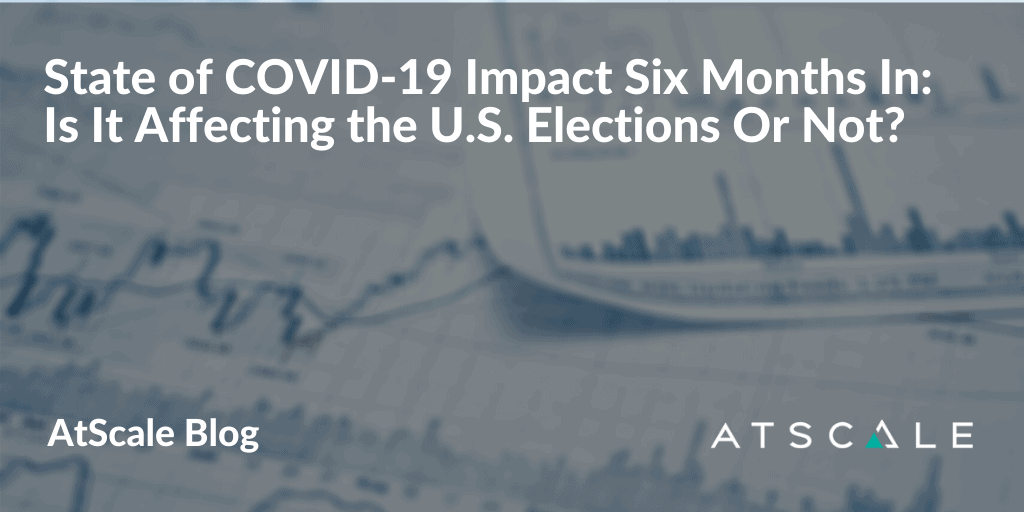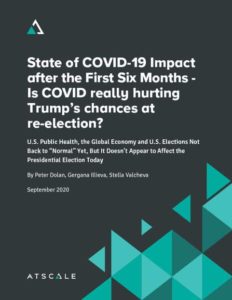
When the World Health Organization (WHO) officially declared the COVID-19 outbreak a pandemic on March 11th, there was widespread uncertainty over how it would impact public health, the global economy, or the 2020 U.S. elections. Six months later, AtScale experts analyzed data made available through the AtScale Data Insights Marketplace using AtScale’s Intelligent Data VirtualizationTM platform on top of Google BigQuery and Snowflake to explore the consequences of the global pandemic.

This article is a subset of the full report that outlines six key findings around impact on (or lack of) the U.S. election. To read the full report, click here. Here are our observations:
- Impact on U.S. public health is high: To date, there have been over 6.5 million confirmed cases of COVID-19 in the United States – the highest total of any country in the world. The hardest areas hit have been the four largest U.S. states. While California leads with the highest number of cases, New York still has the highest number of COVID-19 related deaths to date.
- U.S. air travel is less than half of what it was in 2019: When the pandemic first hit, air travel slowed down immensely. As cases have risen more slowly, states have relaxed their travel-related restrictions, but travel is far from “normal.” It remains to be seen if this trend will continue into the Fall. Without a fresh stimulus plan from the U.S. Congress, we may witness additional furloughs of airline employees just before the elections.
- People are not eating at restaurants: Across the country, there has been a steep decline in in-person dining at restaurants. Not accounting for any increases in take-out dining, reservations at restaurants in New York, a state that has implemented fairly restrictive dining regulations, are down more than 85% during the pandemic compared to the same period in 2019.
- Unemployment is high, but decreasing: The virus and the response has wreaked havoc on the U.S. economy. Unemployment, which was at 3.5% in February, reached 14.7% at its highest point in April. As a result of looser restrictions, fiscal stimulus packages, and an insistence of getting back to normal, employment has been improving month-over-month.
- Job gains are slowing: While the signs of recovery are positive, there is concern that job gains are slowing. As the first wave of stimulus packages winds down, it will be interesting to keep an eye on the monthly job reports to better understand the lasting impact that the COVID-19 pandemic has had on the economy.
- The state of the U.S. presidential election is “interesting”: To what extent is the virus affecting voters? Polling averages from FiveThirtyEight show that the race has been tightening as the number of newly confirmed cases has fallen over the past six to eight weeks. How President Trump handled COVID-19 may not have an impact at all on the U.S. election.
Conclusion: There’s More Clarity, but There’s Still Plenty of Uncertainty
Now six months after the WHO’s official declaration of the COVID-19 pandemic, policy makers, business owners, community members, and voters are still grappling with the question, “What happens from here?” Leveraging today’s analytical tools and combining diverse, dynamic data sets is key to understanding society’s response to the evolving public health crisis. As more data becomes available, key stakeholders can test their hypotheses, monitor new trends, and better prepare for an uncertain future. It’s anyone’s guess how the U.S. presidential election will go.
Over the coming weeks we’ll be adding more data to the AtScale Data Insights Marketplace. Check out the AtScale Data Insights Marketplace often to see new data for analytics and make sure to sign up to learn more about what the data is saying about our return to “normal.”


SHARE
Guide: How to Choose a Semantic Layer